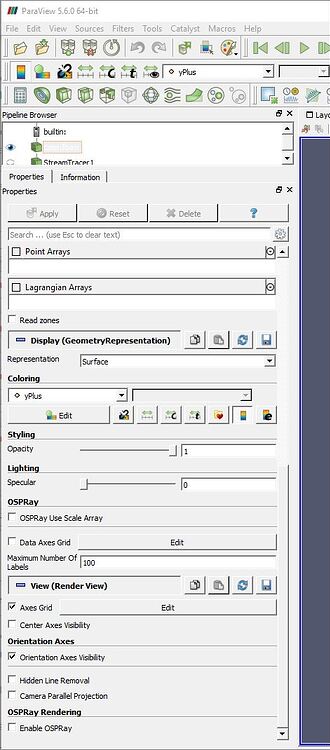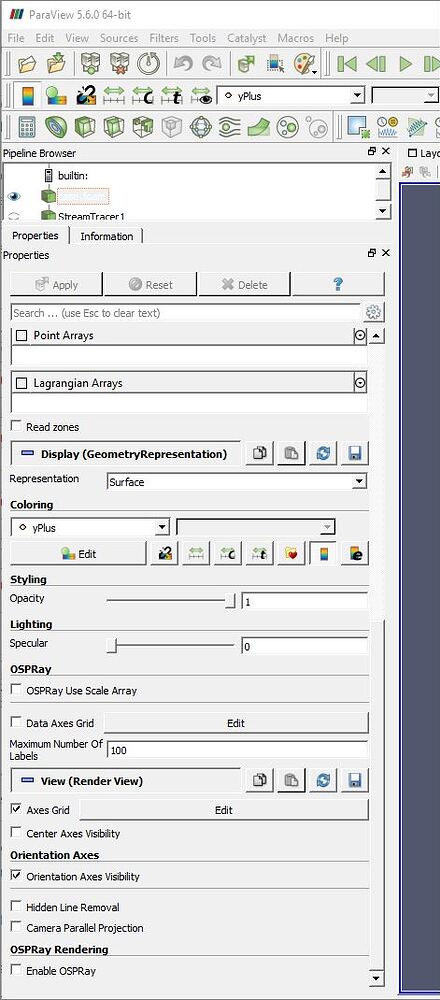
One can use the Tab key to edit the next entry. Enter the data value to annotate under the Value column and then enter the text to use under the Annotation column. That will show the Annotations widget, which is basically a list widget where users can enter key-value pairs, rather value-annotation pairs, as shown in Figure 5.įigure 5: Widget to add/edit annotations on the Color Map Editor panelOne can use the buttons of the right of the widget to add/remove entries. Since annotations is an advanced parameter, one has to either toggle the visibility of advanced properties using the gear icon near the top of the panel, or simply search for Annotations in the search box. The min and max data mapped value annotations are automatically added, to add any other custom annotations, one can use the Color Map Editor. Simply put, annotations allow users to put custom text at particular data values in the color legend. Aspect Ratio is used to control the thickness of the legend: greater the number, thinner the legend. To explicitly label values of interest, use the annotations discussed later in this post.

Note this is a suggestion and may not exactly match the number of labels shown.

Number of Labels is a suggestions for maximum number of labels to show on the legend. By unchecking it, one can explicitly specify the printf style format to use for numeric values. The annotation text shown for that box can be changed by changing the NaN Annotation text.įigure 4: Color legend showing NaN annotationIf Automatic Label Format is checked, ParaView will try to pick an optimal representation for numerical values based on the value and available screen space. When checked, Draw NaN Annotations results in the color legend showing the NaN color setup in the Color Map Editor panel in a separate box right beside the color legend. Any changes made only affect the particular color legend in the active view.īesides the obvious changing of title text and font properties for the title and labels and annotations, some of the other parameters that the user can change are as follows: Draw Annotations controls whether the annotations (including the start and end annotations) are to be drawn at all. This will pop up a dialog that shows the available parameters. The Color Legend Parametersįigure 3: Edit color legend parameters dialogOne can edit the color legend parameters by clicking on the Edit color legend properties button on the Color Map Editor panel. Additionally one can change the length of the legend by dragging the end-markers shown when one hovers the mouse pointer over the legend.

One can click and drag the legend to place it interactively at any position in the view.

One can control the characteristics of the color legend using the Edit color legend properties button. On one side are the automatically generated labels, while on the other side are the annotations, including the start and end annotation which corresponding to the data range being mapped. By default, the title is typically the name of the array (and component number or magnitude for non-scalar data arrays) being mapped. This button affects the visibility of the legend in the active view.įigure 2 shows the various components of the color legend. One can toggle the visibility of the color legend corresponding to the transfer function being shown/edit in the Color Map Editor by using the Show/Hide color legend button near the top of the panel. In this post, we take a look at color legend in 3D views and controlling the labels shown on the legend using annotations.įigure 1: Color Map Editor panel showing buttons that affect the color legend The Color Legendįigure 2: Color LegendThe color legend, also known as scalar bar or color bar, is designed to provide the user information about which color corresponds to what data value in the rendered view. In my previous blog post, we talked about using the Color Map Editor panel to set up the color and opacity transfer functions for scalar coloring.


 0 kommentar(er)
0 kommentar(er)
